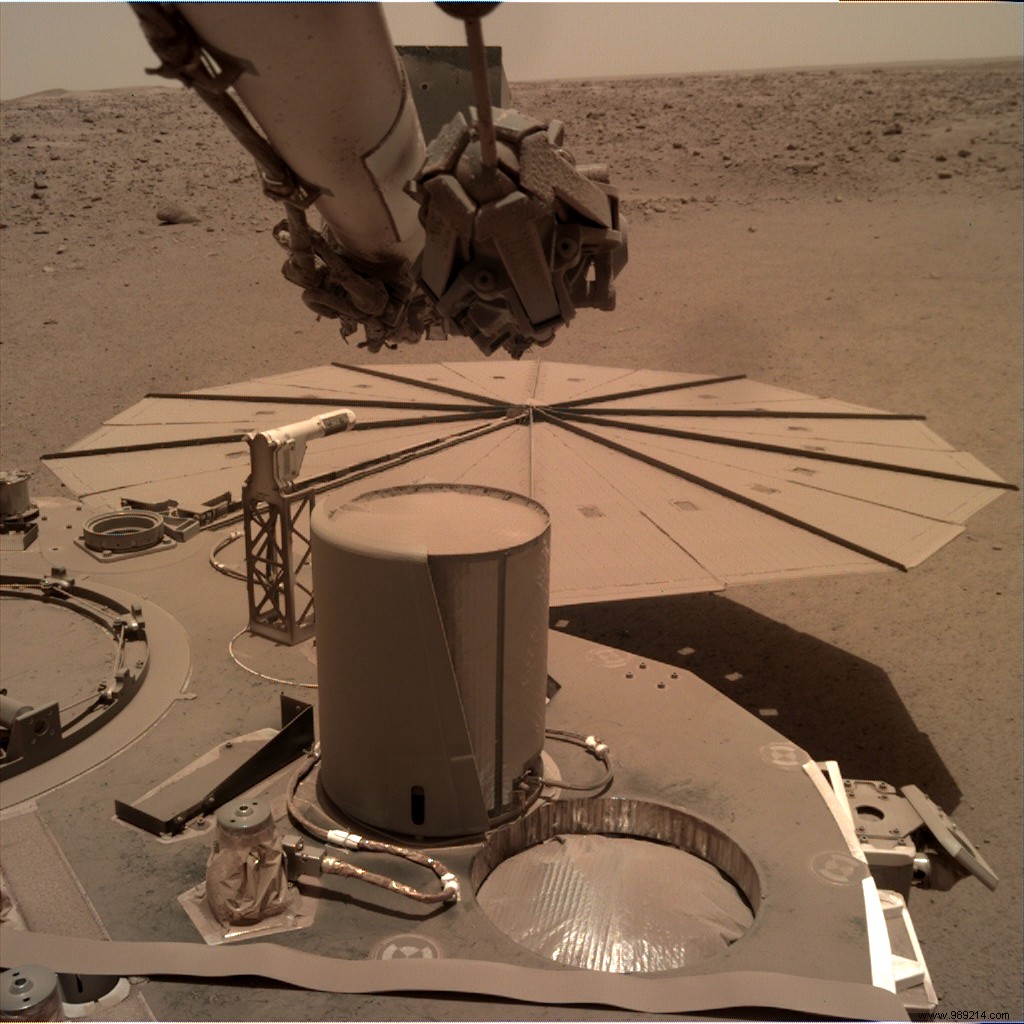NASA's InSight lander has detected two new "Marsquakes" of magnitude 3.1 and 3.5. Operations are also underway to try to bury the cable connecting the seismometer to its lander to protect it from the weather.
The American lander InSight successfully landed in November 2018 on the western side of a lava expanse called Elysium Planitia (level of the Martian equator). Its main purpose is to detect tiny seismic waves passing through the lower layers of the planet in order to learn more about its internal composition. Mars does not have tectonic plates like Earth does, but it does have seismically active regions that can cause rumbling.
Since its clean landing on the surface, Insight has detected over 500 of these earthquakes. Two of them, larger than average, were detected on March 7 and 18. Of magnitudes 3.3 and 3.1 , they were triggered from Cerberus Fossae which concentrates a series of semi-parallel faults.
Since the start of the mission, only two larger earthquakes have been detected (magnitude 3.6 and 3.5). Both came from the same region. These new detections thus add weight to the idea that Cerberus Fossae is an important center of seismic activity.
"During the mission, we recorded two different types of tremors:some more "lunar" [Editor's note:more dispersed waves] and others more "Earth-like “[Editor’s note:more direct trajectories], details Taichi Kawamura of the Institut de Physique du Globe de Paris, who helped provide the InSight seismometer.
"Interesting fact “, adds the researcher, “the four most important seismic events detected on Mars, which come from Cerberus Fossae, are similar to those on Earth “.
These new earthquakes also have another point in common with previous major seismic events recorded by InSight:they occurred during the summer of northern Martian. This was expected by the researchers. At this time of year, the winds are indeed calmer . During the last Nordic winter season, for example, InSight did not detect any earthquakes as the winds were blowing strong.

The winds may have calmed down, but researchers are still hoping to improve their "listening" ability. The main concern concerns the cable connecting the seismometer to the lander, which can produce interference under the effect of significant temperature differences (from -100°C at night to 0°C during the day).
Thus, one of the main objectives of the next phase of the mission, which runs until December 2022, will be to completely bury this seismic tether for the 'insulate from the weather .
The researchers have already started. As you can see below, the idea is to dig up some dirt with the shovel at the end of InSight's robotic arm, then drop it onto the lander's wind and heat shield domed. In this way, the earth then falls back onto the cable.
In the meantime, Mars continues to move away from the Sun and the lander begins to run out of "juice". As you can see in the image above, its solar panels are also covered in dust. Energy levels should improve after July, when the planet begins to approach our star again.
Until then, the mission team will sequentially turn off the lander's instruments so that InSight can hibernate, waking up periodically to check on its health and communicate with Earth.